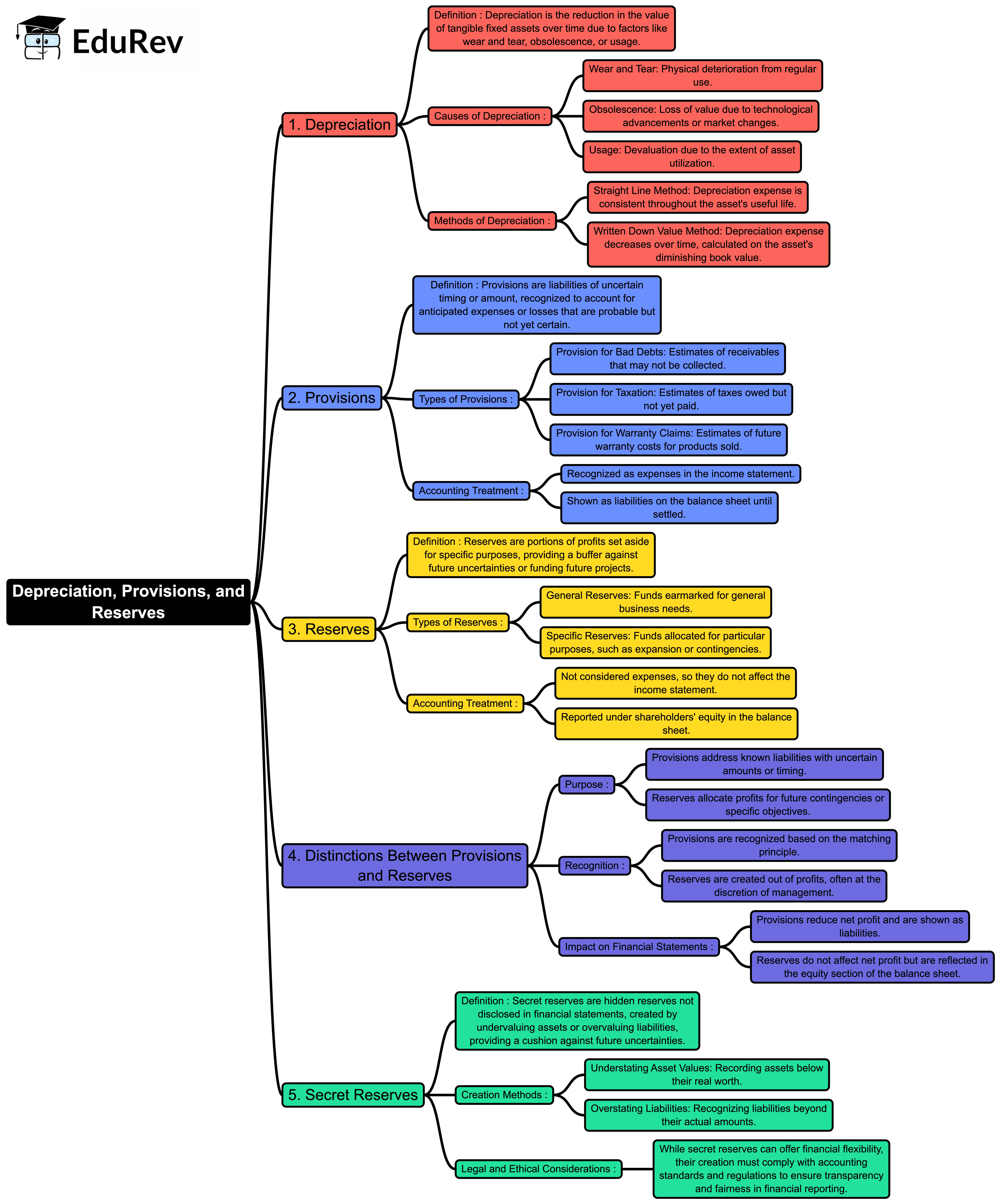Commerce Exam > Commerce Notes > Accountancy Class 11 > Mind Map: Depreciation Provisions and Reserves
Mind Map: Depreciation Provisions and Reserves | Accountancy Class 11 - Commerce PDF Download

The document Mind Map: Depreciation Provisions and Reserves | Accountancy Class 11 - Commerce is a part of the Commerce Course Accountancy Class 11.
All you need of Commerce at this link: Commerce
|
61 videos|227 docs|39 tests
|
FAQs on Mind Map: Depreciation Provisions and Reserves - Accountancy Class 11 - Commerce
| 1. What is depreciation and why is it important in commerce? |  |
Ans.Depreciation is the accounting method used to allocate the cost of a tangible asset over its useful life. It is important in commerce because it helps businesses accurately reflect the value of their assets on their financial statements, allowing for better decision-making and tax calculations.
| 2. How are provisions different from reserves in accounting? |  |
Ans.Provisions are liabilities that are recognized when there is a probable future outflow of resources due to a present obligation, while reserves are part of retained earnings that are set aside for specific future expenditures. Provisions are created for uncertain liabilities, whereas reserves are meant to strengthen the company's financial position.
| 3. What are the different methods of calculating depreciation? |  |
Ans.The most common methods of calculating depreciation include the straight-line method, declining balance method, and units of production method. The straight-line method spreads the cost evenly over the asset's life, while the declining balance method accelerates the expense recognition, and the units of production method bases depreciation on usage.
| 4. Why are provisions important for financial statements? |  |
Ans.Provisions are important for financial statements because they provide a more accurate picture of a company's financial health by accounting for anticipated future expenses. This ensures that the financial statements reflect the potential liabilities, leading to more informed decisions by investors and stakeholders.
| 5. How do businesses determine the appropriate level of reserves? |  |
Ans.Businesses determine the appropriate level of reserves by analyzing historical data, assessing future needs, and considering industry standards. They may also take into account economic conditions and potential risks to ensure they have sufficient funds set aside for unexpected expenses or opportunities.
Related Searches















